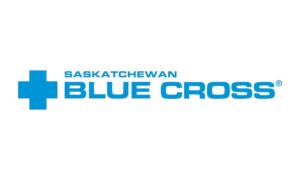How do you stop an Epli claim?
How do you stop an Epli claim?
Employment termination Maintain a professional, employer/employee relationship. Follow progressive disciplinary policies and follow the policies disciplinary actions. Document all previous disciplinary actions, including meetings, to reduce claim potential.
Which of the following is not considered a wrongful act under the Epli?
Which of the following is not considered a wrongful act under the EPLI? Strikes and large scale layoffs are excluded under the policy.
Are Epli policies claims made?
Types of EPLI coverage Most EPLI policies are “claims-made,” meaning that the policy must be in effect both when the event took place and when a lawsuit is filed for a claim to be paid.
What causes Epli claims to rise?
Over the last several years, there have been many very highly-publicized employee liability lawsuits in the media, spearheaded by the #MeToo movement, which has caused the number of companies purchasing EPLI to skyrocket.
What are examples of employment practices?
The following are examples of Employment Practices Liability Insurance (EPLI) claims. Hostile Work Environment. … Wrongful Termination. … Sexual Harassment. … Retaliation. … False Representations.
What is D&O and EPLI?
A proactive approach to management liability coverage that includes Employment Practices Liability Insurance (EPLI), Directors & Officers (D&O) and Fiduciary Liability can help ensure that companies and management are adequately protected from ever-changing risks and new exposures.
Does D&O insurance cover breach of fiduciary duty?
Directors & officers insurance (D&O) is liability insurance that covers the directors and officers of the company against lawsuits alleging a breach of fiduciary duty. A company pays for this coverage so executives can serve confidently as leaders of their organization without fear of personal financial loss.
How much is Minnesota’s unemployment?
How much will I receive? Your weekly benefit amount will be about 50 percent of your average weekly wage up to a state maximum of $820.
How long is unemployment in NY 2021?
26 weeks From August 9, 2021 through September 5, 2021 this program was available for a maximum of 13 weeks. The EB program fully ended on September 5, 2021. … Regular Unemployment Insurance. Original Claim Effective Date* Maximum Number of Benefit Weeks Available September 6, 2021 and later 26 weeks of regular UI 3 more rows
How much is unemployment insurance in UK?
Contribution-based Jobseeker’s Allowance is paid for up to 182 days, if a person is unemployed, capable of and available for work, and is actively seeking work. The maximum weekly rate is £56.80 (age 16-24) and £71.70 (age 25 or over). Sep 18, 2021
How long can you collect unemployment in NJ due to Covid 19?
NEW: How many weeks of unemployment benefits can I receive? Those who meet the requirements for traditional unemployment insurance may receive benefits for up to 26 weeks during a one-year period.
How long does the extra $300 in unemployment last?
The most recent stimulus legislation, the American Rescue Plan Act (ARPA) includes another expansion of federal unemployment benefits. Qualifying Americans will receive $300 per week on top of state unemployment benefits through Sept. 6, 2021. Jun 10, 2021
What is the maximum unemployment benefit in Minnesota 2021?
$762 a week The maximum unemployment benefit you can get in Minnesota is $762 a week through September 6, 2021. After that, the maximum weekly benefit is $491.
Is unemployment extended in NY?
NY won’t extend federal unemployment benefits program, citing unemployment insurance trust fund deficit of $11 billion. Under the CARES Act, states can extend federal unemployment benefit programs, but that won’t happen in New York State. Sep 6, 2021
Who can apply for pandemic unemployment in NY?
Quit a job as a direct result of COVID-19; Place of employment closed as a direct result of COVID-19; Had insufficient work history and affected by COVID-19; Otherwise not qualified for regular or extended UI benefits and affected by COVID-19.




